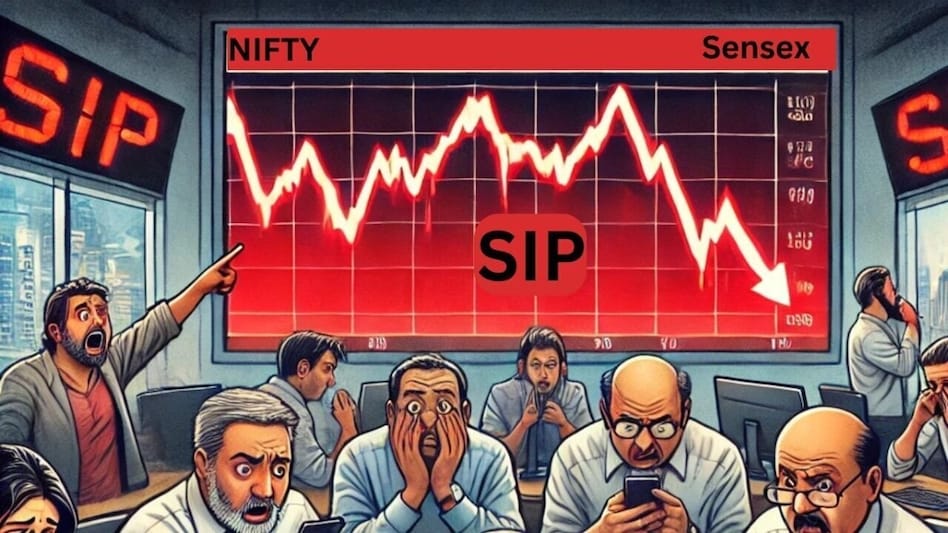 Financial experts emphasize the importance of maintaining SIPs during market downturns. Continuing investments during such periods allows investors to benefit from rupee-cost averaging.
Financial experts emphasize the importance of maintaining SIPs during market downturns. Continuing investments during such periods allows investors to benefit from rupee-cost averaging. Financial experts emphasize the importance of maintaining SIPs during market downturns. Continuing investments during such periods allows investors to benefit from rupee-cost averaging.
Financial experts emphasize the importance of maintaining SIPs during market downturns. Continuing investments during such periods allows investors to benefit from rupee-cost averaging.In March, the mutual fund sector in India saw a significant shift with the closure of 5.1 lakh Systematic Investment Plans (SIPs). This surge in closures brought the stoppage ratio to an unprecedented 127.5%. This figure indicates the percentage of SIP closures against new registrations, points to a concerning trend where more investors are opting to discontinue their systematic contributions. The rise in the closure of SIPs this month surpasses figures seen in previous months, suggesting potential investor apprehension about the current market conditions.
SIPs have been a favoured investment vehicle among retail investors in India, providing a disciplined approach to investing in mutual funds. However, the recent increase in closures could be attributed to several economic factors, including market volatility. Fluctuations in financial markets may have negatively impacted investor sentiment, prompting them to reassess their investment strategies. This trend raises concerns about the growth prospects and stability of the mutual fund industry, as sustained closures could impact overall fund inflows.
Additionally, the natural completion of SIP tenures and regulatory clean-up of inactive accounts have also played a role. Despite these challenges, monthly SIP inflows remained robust at Rs 25,926 crore in March, reflecting a 34.5% year-on-year increase.
Financial experts emphasise the importance of maintaining SIPs during market downturns. Continuing investments during such periods allows investors to benefit from rupee-cost averaging, purchasing more units at lower prices, which can enhance long-term returns.
"While recent declines may be concerning, they are a natural part of market cycles. Amidst this, SIPs remain one of the best ways to navigate volatility. Today, even amidst such volatility, the inflows in SIPs have continued to remain stable at the 26400 level. Investors who have stopped their investments are mostly via direct folios. Staying invested ensures you benefit from rupee cost averaging and long-term compounding. Amidst volatility, one should not stop SIPs; instead, continue them and stagger lumpsums if available. A strategy is what is needed to ride the market volatility. This can be created with a combination of equity and debt, which has an 80:20 ratio. In equity, diversifying across large, mid, and small caps continues to offer strong potential, with expected earnings growth of 20-22% for small and mis caps and 10% for large caps. Given the recent corrections, this could be a good time to stay invested. SIP remains the preferred strategy, particularly in volatile segments. Historical data shows that when SIP returns turned negative in the short term, they recovered well over the next five years, delivering 21% average returns," Chirag Muni, Executive Director, Anand Rathi Wealth Limited, told Business Today earlier.
Alternate investments
The current trend suggests that investors might be exploring alternative investment avenues, driven by the search for potentially higher returns or greater security. The inclination to reallocate funds away from mutual fund SIPs could further affect the industry's ability to attract and retain investors. This shift necessitates a closer examination of the underlying reasons driving investors to terminate their SIPs and consider other financial products.
Competing investment products, including fixed deposits, equities, or emerging options like digital assets, might be diverting the attention of retail investors. These alternatives could be perceived as offering higher returns or being less vulnerable to market fluctuations. The mutual fund industry may need to address these competitive pressures by enhancing the value proposition of SIPs and effectively communicating the benefits of remaining invested through market cycles.
To counter the high stoppage ratio, the mutual fund sector must take proactive measures to understand and respond to this evolving investor behaviour. Engaging with investors and addressing their concerns can help retain existing clients while attracting new ones.
Analysts suggest that educating investors about the long-term advantages of SIPs, even amidst market volatility, could be a way forward. Industry stakeholders must focus on reinforcing confidence in mutual funds as a viable investment choice to mitigate the impacts of this trend. The industry's response will be crucial in shaping its future trajectory and maintaining its role as a key component of individual investment portfolios in India, amidst growing competition from other financial products.